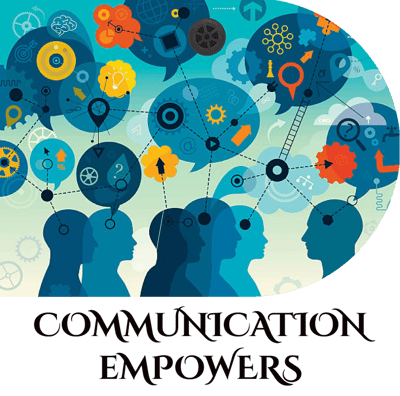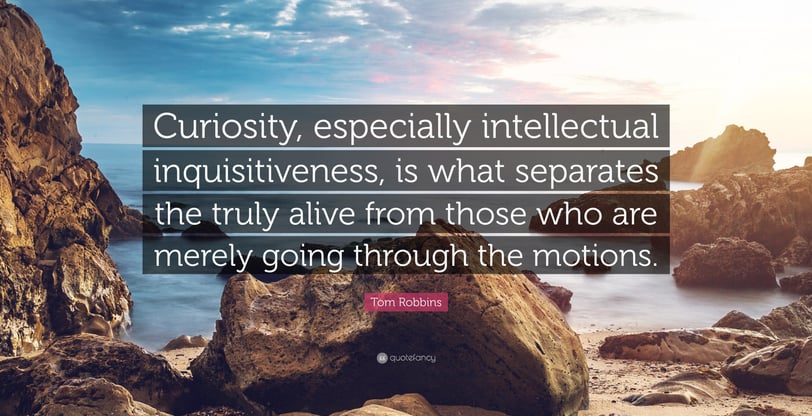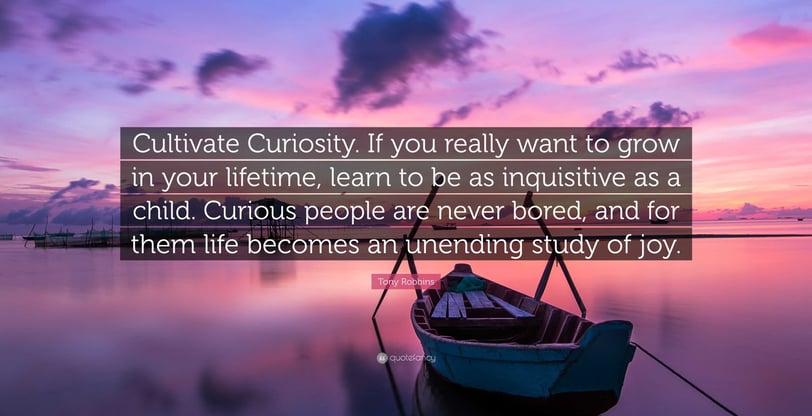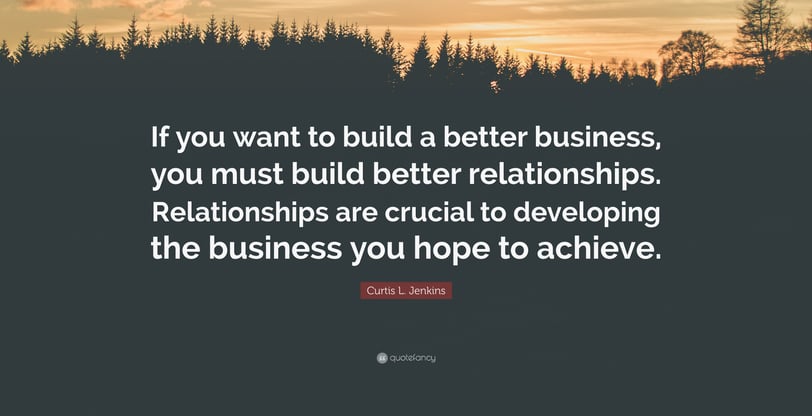Welcome to our website! Communication Empowers provides a professional staff focused on business and corporate communication. Our staff members hold advanced degrees, considerable experience, and are strongly dedicated to producing high-quality business and corporate communication products. You need a strategy for both; they have different goals and results. Event and special occasion products are included, along with professional and technical writing, document, graphic, and web design.
We also provide branding, marketing collateral, and all types of writing and editing. These services include training manuals, editing services, including capstone and dissertation editing for graduate students, and assistance with peer-reviewed journal articles. We strive to use our experience, education, knowledge, and skills to help our clients succeed.
Professional and Affordable Communication Products and Services


Communication is the process of conveying information, thoughts, and feelings between individuals, encompassing verbal, nonverbal, written, and visual forms, all aimed at creating shared understanding. It is the purposeful exchange of information, ideas, and feelings between individuals, encompassing verbal, nonverbal, written, and visual forms, all aimed at creating a shared understanding.
A more comprehensive understanding of communication refers to the sharing of information, ideas, and feelings, typically aimed at mutual understanding. In this way, you must consider the sender, the recipient, and the transaction. Simply put, the sender is the person sharing the message, the recipient is the person receiving and interpreting the message, and the transaction is the way that the message is delivered and the factors that influence the context and environment of the communication. As you can see, communication is a complex process. It involves more than just what you say and takes many forms. Our work life is consumed by communication, there is no escaping it. Whether drafting emails and documents; taking meetings by phone, Zoom, and in person; or managing a constant stream of Slack notifications, we’re all moving business forward through communication. Good business communication is a strategic imperative to fuel success in today’s competitive landscape.
Effective communication can enhance productivity, intensify customer and employee satisfaction, foster new business deals, and facilitate significant cost savings. On the other hand, poor communication can negatively impact your brand’s reputation, employee engagement, and the bottom line. However, one core problem is achieving operational excellence: not everyone is on an equal playing field when communicating effectively. In any organization, employees have varying educational backgrounds, primary languages, learning styles, language proficiencies, and now, degrees of generative AI literacy. If your employees lack the necessary skills or tools to communicate effectively, poor communication can quickly create an invisible drag on your business performance. Creativity is an integral element in professional communication and involves using innovative and engaging methods to convey messages, fostering memorable experiences, and building stronger relationships with stakeholders, both internally and externally.
Communication
Creative communication changes ordinary messages into engaging ones, making them memorable and ensuring the audience grasps essential information.


Creative Communication
Creative communication is powerful and more than just using overused cliches, which can illustrate a lack of effort, imagination, or sincerity in writing, speech, and creative works. Creative thinking is all about developing innovative solutions to problems. Creative thinkers will brainstorm and experiment with them, It is about making connections with others. Creative communication grabs our attention and can make a good story or message memorable. Think about what made your best ideas so good, they likely had a strong narrative arc and compelling subjects that can make a story relatable and interesting. This type of creative communication provides a clear introduction. Creative communication is powerful and more than just using overused cliches, which can illustrate a lack of effort, imagination, or sincerity in writing, speech, and creative works. Creative thinking is all about developing innovative solutions to problems.
Creative thinkers brainstorm not only a large number of ideas but also a variety and range of them. Once they've brainstormed their ideas, creative thinkers will experiment with them. It is about connecting with others in a way that sparks their interest and makes them want to listen. Creative communication combines storytelling, emotional connection, and the power of visuals. These elements are the building blocks of getting your message across effectively. compelling content, and a fulfilling conclusion. Also, compelling characters can make a story relatable and interesting. Practice building your own stories. Think about a time you learned a lesson. Share it with a friend. See how they react. Creative communication is powerful and more than just using overused cliches, which can illustrate a lack of effort, imagination, or sincerity in writing, speech, and creative works.
Creative thinking is all about developing innovative solutions to problems. Creative thinkers brainstorm not only a large number of ideas but also a variety and range of them. Once they've brainstormed their ideas, creative thinkers will experiment with them. It is about connecting with others in a way that sparks their interest and makes them want to listen. Creative communication combines storytelling, emotional connection, and the power of visuals. These elements are the building blocks of getting your message across effectively.
People are connected and influenced by emotions. If you can make someone feel something, they're more likely to remember what you said. Empathy is key, especially if a colleague is having a bad day. Put yourself in the other person's shoes. What do they care about? What are their fears? Tailor your message to their needs and feelings. When you show that you understand, people are more likely to listen. Creative thinking is all about developing innovative solutions to problems. Creative thinkers brainstorm not only a large number of ideas but also a variety and range of them. Once they've brainstormed their ideas, creative thinkers will experiment with them.
Boosting Your Creative Communication Skills
Creative thinking is the ability to approach situations and problems with fresh perspectives, generate novel ideas, and explore multiple possibilities, ultimately leading to innovative solutions. Listening is just as important as talking. Active listening means paying attention. Focus on what the other person is saying; don't just wait for your turn to speak. Body language will typically indicate emotions, illustrating if they are happy, sad, or confused. Use the following clues to tailor your response.
Imagination: Using your imagination to envision new possibilities and ideas.
Innovation: Developing novel solutions or approaches to problems.
Problem-solving: Identifying problems and finding unique solutions.
Open-mindedness: Considering different perspectives and ideas.
Flexibility: Adapting to new situations and challenges.
Making Connections: Linking seemingly unrelated concepts to form new ideas.
Brainstorming: Generating a large number of ideas to explore different possibilities.
Lateral Thinking: Thinking outside the box and exploring unconventional solutions.
Reconceptualizing problems: Framing problems in new ways to find innovative solutions.
Experimentation: Testing ideas and iterating on them to improve solutions.
The Creative Process: Creative thinking often involves stages like preparation, incubation, illumination, evaluation, and implementation.
Active Listening & Observation Communication
Listening is just as essential as talking. Active listening means paying attention and focusing on what the other person is saying. Don't just wait for your turn to speak; watch their body language. What are they saying? Are they happy, sad, or confused? You can use these clues to tailor your response. To become a better listener, summarize what the other person said before you reply to show you were paying attention. Creative thinking is all about developing innovative solutions to problems. Creative thinkers brainstorm not only a large number of ideas but also a variety and range of them. Once they've brainstormed their ideas, creative thinkers will experiment with them.
Experimenting with Different Media
Don't stick to just one way of communicating. Try different things. Write a poem. Create a short video. Learn to play an instrument. Each medium can teach you something new about communication. For instance, visual arts can help you think about design, and music can teach you about rhythm and tone. Try new things to expand your creative abilities.
Innovative Problem-Solving
New ideas can solve tough problems. Creative communication helps unlock those ideas. It creates a space where people feel safe to share their thoughts. It encourages people to think outside the box. Diverse perspectives can lead to breakthroughs. Creative thinking is all about developing innovative solutions to problems. Creative thinkers brainstorm not only a large number of ideas but also a variety and range of them. Once they've brainstormed their ideas, creative thinkers will experiment with them. Creative communication is a skill anyone can learn. It's about storytelling. It's about connecting with others. It's about using visuals to get your point across. It takes practice. But the rewards are worth it. Embrace your creative potential. Keep refining your communication skills. Start today, and share your ideas with the world. You have a unique voice; let it be heard.
Creative Communication Enhances Engagement


"Communication leads to community, that is to understanding, intimacy and mutual valuing." Rollo Reece May
Empathy and emotional connection are intertwined, where empathy, the ability to understand and share another's feelings, is crucial for building deep, meaningful connections with others. When people feel understood and validated, they are more likely to form strong relationships. Take a deeper look at the relationship between empathy and emotional connection:
How Empathy Facilitates Emotional Connection:
Understanding Others' Perspectives:
Empathy allows us to step into another person's shoes, understand their experiences, and recognize their emotions, fostering a sense of connection.
Building Trust and Rapport:
When we demonstrate empathy, we show that we care about the other person's feelings and experiences, which builds trust and strengthens relationships.
Creating a Safe Space:
Empathy creates a safe space for people to share their emotions and vulnerabilities, which is essential for building emotional intimacy.
Responding Appropriately:
Empathy helps us respond to others in a way that is sensitive to their needs and feelings, which strengthens the connection.
Emotional Attunement:
Empathy is rooted in emotional attunement, which is the ability to be sensitive and receptive to a person's emotional state.
Active Listening:
Empathy requires active listening, which is paying close attention to what someone is saying, both verbally and nonverbally, and responding in a way that shows you understand.
Validating Emotions:
Acknowledging and validating someone's emotions can make them feel heard and understood, which is a key component of empathy and emotional connection.
Types of Empathy:
Emotional Empathy:
This involves feeling what others are feeling, experiencing their emotions as if they were your own.
Cognitive Empathy:
This involves understanding another person's perspective and mental state, even if you don't feel the same emotions.
Compassionate Empathy:
This goes beyond understanding feeling and involves a desire to alleviate someone else's suffering.
The Importance of Emotional Connection:
Well-being:
Strong emotional connections are essential for our mental and emotional well-being, providing a sense of belonging and support.
Relationships:
Emotional connection is the foundation of healthy and fulfilling relationships, whether romantic, familial, or platonic.
Social Interactions:
Empathy and emotional connection are vital for navigating social situations and building positive relationships with others.
Personal Growth:
Connecting with others emotionally can help us learn, grow, and develop as individuals.


Emotional Connection & Empathy
"Empathy is seeing with the Eyes of Another, listening with Ears of Another, and feeling the heart of Another Connection & Empathy." - Alfred Adler
Relationships are the cornerstone of human connection, shaping our interactions and experiences in profound ways. At the heart of fostering meaningful and fulfilling relationships lies the often underestimated quality of curiosity. By delving into the depths of curiosity, we unearth a wealth of opportunities for growth, understanding, and connection. This article explores the pivotal role that curiosity plays in building and nurturing relationships, delving into how embracing curiosity can enhance emotional intelligence, communication, trust, and empathy within our interpersonal connections. Emotional communication involves sharing feelings and building a deeper connection, while non-emotional communication focuses on conveying information or completing tasks without necessarily involving emotions.
Emotional Communication:
Definition:
Emotional communication goes beyond factual information and involves expressing feelings, emotions, and personal experiences.
Characteristics:
Vulnerability: Sharing personal thoughts and feelings.
Empathy: Understanding and acknowledging the emotions of others.
Intimacy: Building a strong and meaningful connection.
Non-verbal cues: Facial expressions, body language, and tone of voice play a significant role.
Importance:
Stronger relationships: Emotional connection is crucial for building and maintaining healthy relationships.
Improved communication: Understanding and expressing emotions effectively leads to better communication.
Emotional well-being: Sharing emotions can help individuals feel understood and supported.
Examples:
Expressing gratitude for a friend's support.
Sharing a personal story about a challenging experience.
Offering comfort and understanding to someone who is upset.
Non-Emotional Communication:
Definition:
Non-emotional communication focuses on conveying information, facts, or instructions without necessarily involving personal feelings or emotions.
Characteristics:
Objectivity: Presenting information in a neutral and unbiased way.
Clarity: Ensuring that the message is clear and easy to understand.
Efficiency: Getting the message across quickly and effectively.
Importance:
Professional settings: Non-emotional communication is essential in workplaces and other professional environments.
Instructional contexts: Providing clear and concise instructions or directions.
Everyday interactions: Conveying factual information in a variety of situations.
Examples:
Giving directions to a new place.
Explaining a procedure or process.
Presenting data or statistics in a report.
Building Relationships and Fostering Open Communication


"Honest communication is rooted in telling the truth and avoiding deception or misrepresentation." - Unknown
Curiosity
Curiosity is the driving force behind all creative endeavors. It is the spark that ignites our imagination and propels us forward on a journey of exploration and discovery. Without curiosity, our minds would remain stagnant, closed off to new ideas and possibilities.
Curiosity pushes us to seek out new experiences, to challenge the status quo, and to ask questions that lead us down unexpected paths. It is through curiosity that we are able to connect the dots between seemingly disparate ideas, to uncover hidden connections, and to unlock the door to innovation.
Embracing curiosity means embracing a mindset of wonder and possibility. It means being open to the unknown, to the uncertain, and to the potential for growth and discovery. By cultivating our curiosity, we empower ourselves to think creatively, to dream big, and to create change in the world around us. Curiosity is not just a trait, but a mindset—a way of approaching the world with openness, wonder, and a thirst for knowledge. It is through curiosity that we are able to push the boundaries of what is possible and to unlock the infinite potential of our creative minds.


"The cure for curiosity is boredom. There is no cure for curiosity." Dorthy Parker
How healthy is your curiosity? A lack of curiosity can lead to apathy, boredom, conformity, low empathy and a sense of being stuck. Pay attention to your thinking over the next couple of days and notice: Are you interested in finding out why someone who angers you behaves that way? Do you wonder how everyday technology and systems work? Do you wrestle with problems until you can solve them? Are you interested in finding out about your colleagues’ upbringings? Do you question beliefs or points of view you’ve held since your youth? If your curiosity has waned, fear not! Curiosity can be nurtured and grown with deliberate intention and a bit of effort. Einstein said: “I have no special talent, I’m only passionately curious.”
Sustaining high levels of curiosity is the starting point of creativity.
Sometimes, clever people can become too secure in their high intelligence or expertise that they lose the curiosity essential to achieving anything new. If learning facts and understanding the existing rules of domains come too easy to a high-IQ person, there may be no incentive to question, doubt, to improve on existing knowledge. Curiosity creates grit; without a burning curiosity, we are unlikely to persevere long enough to make significant new contributions. Curiosity and drive are, in many ways, the yin and the yang that need to be combined to become creative. Curiosity requires openness to outside stimuli. It is playful and deals with objects and ideas for their own sake. Drive needs inner focus, seriousness, competitive spirit, and achievement orientation.
Curiosity is good for you! Psychologists have compiled a large body of research on the many benefits of curiosity. It enhances intelligence: In one study, highly curious children, aged three to 11, improved their intelligence test scores by 12 points more than their less curious counterparts did. It increases perseverance, or grit: Merely describing a day when you felt curious has been shown to boost mental and physical energy by 20% more than recounting a time of profound happiness. Curiosity propels us toward deeper engagement, superior performance, and more-meaningful goals: Psychology students who felt more curious than others during their first class enjoyed lectures more, got higher final grades, and subsequently enrolled in more courses in the discipline.”
Credit: Christina Gandolfo, The Five Dimensions of Curiosity, Harvard Business Review
Curiosity is integral to a creative mindset


Cultivate Curiosity
The Importance of Curiosity in Creativity
Curiosity is essential for creativity. It ignites our imagination and encourages exploration, helping us discover new ideas.
Key Points:
• Curiosity drives us to seek new experiences and question the status quo.
• It connects different ideas, leading to innovation.
• Embracing curiosity means adopting a mindset of wonder and being open to the unknown.
• A lack of curiosity can result in boredom, apathy, and a feeling of being stuck.
• Reflecting on your curiosity can reveal your level of interest in learning and understanding others.
• Curiosity can be developed with intention and effort.
• Creative people may sometimes become complacent in their intelligence, losing the curiosity needed for growth.
• Curiosity fosters perseverance and grit, essential for making significant contributions.
• Research shows curiosity enhances intelligence, boosts perseverance, and leads to better performance. For instance, curious students perform better academically and engage more deeply in their subjects.
Conclusion:
Curiosity is fundamental for creativity, learning, and personal growth. Cultivating it can significantly enhance our abilities and enrich our lives.
Curiosity is a powerful tool in communication, cultivating a deep understanding, stronger connections, and more meaningful conversations by encouraging active listening, asking probing questions, and seeking to understand different perspectives. Fostering deeper engagement and understanding by encouraging active listening, insightful questioning, and a genuine interest in others' perspectives. The following will illustrate curiosity and how it enhances communication.
Active Listening:
Curiosity motivates you to pay close attention to what others are saying, rather than just waiting for your turn to speak, but genuinely wanting to understand the other person's thoughts and feelings.
Insightful Questioning:
Curiosity prompts you to ask thoughtful questions beyond surface-level inquiries, leading to richer and more meaningful conversations. A curious mindset leads to asking more questions, exploring topics in greater depth, and uncovering valuable insights.
Empathy and Understanding:
By being curious about others' experiences and perspectives, you can develop a deeper understanding and empathy, which is crucial for building strong relationships, even when you disagree.
Improved Relationships:
When you demonstrate genuine curiosity in a conversation, you signal to the other person that you value them and their ideas, which can strengthen relationships. When people feel heard and understood, they are more likely to engage in open, honest communication, leading to stronger relationships.
Conflict Resolution:
Curiosity can help you understand the root causes of disagreements, which can lead to more productive and constructive conflict resolution.
Learning and Growth:
Curiosity fuels a desire to learn and grow, both for yourself and for others.
Sparking New Ideas:
Curiosity can lead to unexpected insights and new ideas, fostering creativity and innovation.
Authenticity:
When you approach communication with curiosity, you are more likely to be authentic and genuine in your interactions.
Building Trust:
By showing genuine interest in others, you build trust and rapport, which is essential for effective communication.
Motivation and Engagement:
When people feel that their ideas and perspectives are valued through curiosity, they are more likely to be motivated and engaged in the conversation.
Curiosity is a powerful tool




Cultivate Curiosity
Embrace a growth mindset, ask questions, seek out new experiences, and surround yourself with curious people.


Cultivating curiosity and building relationships in the workplace includes encouraging open communication, actively listening, asking engaging questions, and creating opportunities for collaboration and shared experiences, fostering a culture of learning and connection. Relationships are the cornerstone of human connection, shaping our interactions and experiences in profound ways. At the heart of fostering meaningful and fulfilling relationships lies the often underestimated quality of curiosity. By delving into the depths of curiosity, we unearth a wealth of opportunities for growth, understanding, and connection. Create a safe space where employees feel comfortable asking questions, challenging assumptions, and exploring new ideas. Provide access to resources like books, courses, and webinars, and encourage participation in workshops and conferences. Encourage employees to take on new projects, explore different departments, and attend events outside their usual work scope. Regularly solicit feedback from employees and be open to incorporating their ideas and perspectives. Demonstrate your curiosity by asking questions, seeking feedback, and showing genuine interest in learning from others. Actively listen to others' perspectives and ideas, and show genuine interest in their thoughts and experiences. Leaders who show vulnerability and share their struggles can create a more open and trusting environment.
Intellectual Curiosity
Live a life full of humility, gratitude, intellectual curiosity, and never stop learning.
Key Characteristics
Open-mindedness: Intellectually curious individuals are receptive to new ideas and perspectives. Lifelong learning: They are constantly seeking new information and experiences. Critical thinking: They analyze information, question assumptions, and make connections between concepts. Inquisitiveness: They are naturally inclined to ask questions and explore different ideas.
Benefits:
Enhanced understanding: Intellectual curiosity helps individuals gain a deeper and more comprehensive understanding of the world.
Improved problem-solving: By exploring different perspectives and seeking new information, intellectually curious individuals are better equipped to solve problems.
Increased creativity: The constant pursuit of knowledge and new ideas can spark creativity and innovation. Stronger relationships: Sharing knowledge and expressing curiosity about others' interests can help build stronger relationships. Career Advancement: Employers value intellectual curiosity as a key soft skill, as it demonstrates a willingness to learn, adapt, and contribute to a team.
Examples:
Making time to research and explore topics that interest you.
Seeking out connections between different pieces of information.
Constantly questioning assumptions and looking for better solutions.
Asking probing questions to understand complex ideas.
Engaging in discussions and debates to learn from others.
The Importance of Curiosity in Building Relationships
Active Listening: Curiosity drives effective listening, allowing people to feel valued. Engaging with others involves understanding their personal and professional lives.
Building Empathy: Forging relationships, it is important to empathize with others. Asking thoughtful questions, such as about their work or personal experiences, encourages deeper conversations.
Avoiding Yes/No Questions: Questions should promote dialogue and insight rather than simple yes or no answers. This approach helps reveal shared interests and experiences.
Genuine Interest: Sharing personal stories can encourage others to open up. It's important to balance sharing and asking questions for a meaningful exchange.
Curiosity in the Workplace: Many professionals overlook curiosity in workplace interactions. Taking the time to understand colleagues beyond work duties fosters engagement and trust.
Enhancing Performance and Engagement: Leaders benefit from curiosity by facilitating open conversations about challenges and successes. Asking probing questions can uncover valuable insights.
Creating Connections: Personal connections at work can be strengthened by showing authentic interest in coworkers’ lives and experiences, leading to a supportive work environment.
Best Practices for Fostering Curiosity: Effective curiosity involves focusing on others, a willingness to learn, comfort with uncertainty, and creating a safe space for open dialogue.


Creative Communication Enhances Engagement
Create Opportunities for Interaction:
Organize team-building activities, social events, and brainstorming sessions to facilitate interaction and connection.
Get to Know Your Colleagues:
Make an effort to learn about your colleagues' interests, hobbies, and personal lives outside of work.
Show Empathy and Understanding:
Demonstrate empathy and understanding towards your colleagues' challenges and perspectives.
Celebrate Successes:
Acknowledge and celebrate both individual and team accomplishments to foster a sense of community and belonging.
Remember Personal Details:
Remember birthdays, anniversaries, and other personal details about your colleagues to show that you care.
Use Curiosity as a Tool:
Use curiosity as a tool for building relationships by asking open-ended questions and actively listening to their answers.
Be Mindful of Your Approach:
Ensure that your curiosity is genuine and not intrusive, and that you are respecting your colleagues' boundaries. Curiosity is essential for building relationships and improving workplace dynamics. By prioritizing listening and engaging with others through thoughtful inquiry, we can create meaningful connections and enhance our collective experience. Emphasizing curiosity allows for deeper understanding and collaboration with those around us. A valuable skill that enhances our ability to connect with others and involves asking questions and listening actively, which helps build trust and deepen relationships. This approach applies to both personal and work situations.
To effectively measure and evaluate creative success strategies, define clear objectives, choose relevant metrics (like engagement, conversions, and ROI), collect and analyze data, and use insights to refine future strategies.
1. Define Clear Objectives and KPIs:
Set specific, measurable, achievable, relevant, and time-bound (SMART) goals: What do you hope to achieve with your creative strategy?
Identify Key Performance Indicators (KPIs): What metrics will tell you if you're succeeding?
Examples: Impressions, click-through rate (CTR), social media engagement, conversions, sales, brand awareness, and customer journey.
2. Choose Relevant Metrics:
Consider the type of creative and the goals:
Different metrics are relevant for different types of creative and campaigns.
Examples of metrics:
Engagement: Likes, comments, shares, and other social media interactions.
Conversions: Sign-ups, purchases, or other desired actions.
Return on Investment (ROI): Quantify the revenue generated compared to the cost of your creative campaigns.
Brand Awareness: Track how well people recognize your brand.
Customer Journey: Map out the customer experience and identify areas for improvement.
Ad Strength Score: Evaluate the overall effectiveness and relevance of your ad creative.
3. Collect and Analyze Data:
Use analytics tools:
Google Analytics, Facebook Insights, or other platforms to track your metrics.
Compare and benchmark results:
Compare your performance to previous campaigns and competitors.
Test and experiment:
A/B test different creative elements to see what resonates best with your audience.
Collect and analyze qualitative feedback:
Gather feedback from customers and stakeholders to understand their perceptions of your creative.
4. Refine and Iterate:
Use data to make informed decisions:
Identify what's working and what's not, and adjust your strategy accordingly.
Continuously improve:
Regularly review your creative strategy and make adjustments based on performance data and feedback.
Embrace a Growth Mindset
View challenges as opportunities: Instead of fearing failure, see challenges as chances to learn and grow.
Focus on learning and improvement: Prioritize the process of learning over achieving specific outcomes.
Be open to new ideas and perspectives: Challenge your assumptions and be willing to consider different viewpoints.
Ask Questions and Seek Answers
Be inquisitive: Don't be afraid to ask questions and seek clarification.
Explore your interests: Follow your curiosities and delve deeper into topics that pique your interest.
Challenge traditional ways of thinking: Question assumptions and seek out alternative explanations.
Seek Out New Experiences
Try new things: Step outside your comfort zone and explore different activities and hobbies.
Travel and explore different cultures: Expand your horizons by experiencing new places and meeting new people.
Read widely and learn about different subjects: Expand your knowledge base and discover new interests.
Surround Yourself with Curious People
Engage in conversations with curious individuals: Their enthusiasm and inquisitiveness can be contagious.
Join book clubs or attend workshops: These activities can spark your curiosity and introduce you to new ideas.
Look for mentors or role models who embody curiosity: Learn from their example and seek their guidance.
Cultivate Empathy and Understanding
Listen actively and try to understand different perspectives:This can help you develop empathy and broaden your understanding of the world.
Be open to learning from others: Recognize that everyone has something valuable to offer, and be open to learning from their experiences.
Practice self-reflection:Take time to reflect on your own thoughts and feelings, and how they shape your understanding of the world.
Emotional connection involves a deep, personal understanding and shared experience, while non-emotional communication focuses on conveying information or completing tasks without necessarily involving feelings or personal connection.
Emotional Connection:
Definition:
Emotional connection is about building trust, understanding, and empathy, fostering a sense of closeness and intimacy.
Characteristics:
It involves sharing thoughts, feelings, and vulnerabilities, and actively listening to and validating others' emotions.
Importance:
Strong emotional connections are crucial for building healthy relationships, fostering trust, and promoting well-being.
Examples:
Sharing personal stories, offering support during difficult times, and engaging in meaningful conversations.
Non-Emotional Communication:
Definition:
Non-emotional communication focuses on conveying information, instructions, or facts in a neutral and objective manner.
Characteristics:
It often involves clear and concise language, avoiding emotional language or personal opinions.
Importance:
Effective non-emotional communication is essential for tasks such as giving instructions, making announcements, or providing feedback.
Examples:
Giving directions, writing a report, or following a set of instructions.
Overcoming Mental Blocks
Sometimes, your mind can be your worst enemy. Mental blocks can stop your creativity. One common block is assumptions. You might think something is impossible, so you don't even try. To overcome these blocks, challenge your assumptions. Ask yourself, "Why do I believe this?" and "Is there another way to look at it?" Reframing problems can also help. Instead of seeing a problem as a threat, see it as a chance to learn and grow.
Adapting Communication Styles for Different Audiences
The way you talk to your friends is different from how you talk to your boss. The same is true for creative communication. You need to adjust your style based on who you are talking to. If you are talking to experts, more technical language should be used, but keep it simple If you are talking to the general public
For example, if you are trying to sell a new product, you might use a funny video on social media to reach a younger audience. But, you might use a detailed report to convince investors. The message is the same, but the way you send it is different.
Visual Communication and Design Thinking
Pictures are powerful. They can grab attention and help you explain ideas quickly. Visual communication is about using images, videos, and other visual elements to enhance your message.
Design thinking is a problem-solving approach that focuses on understanding the needs of the people you are trying to reach. It involves making things visual, testing ideas, and making changes based on feedback. It is a great way to make sure your creative communication is effective.
Brainstorming and Idea Generation
Brainstorming is a great way to come up with lots of ideas quickly. With many different ways to brainstorm. Mind mapping is a visual way to organize your ideas. Reverse brainstorming involves thinking about all the ways you could fail, and then turning those into ideas for success.
To run a great brainstorming session, start by defining the problem. Then, set a timer and encourage everyone to share ideas, no matter how wild they seem. Write down all the ideas. After the time is up, review the ideas and pick the best ones.
Lateral Thinking and Problem-Solving
Lateral thinking is about approaching problems from new angles. It involves breaking free from traditional ways of thinking. It is about looking for unusual solutions.
For example, a company was struggling to get people to pay bills on time. Instead of sending angry letters, they sent postcards with pictures of happy families. The postcards reminded people what they were working for. It worked! Payments increased.
Embracing Experimentation and Iteration
Don't be scared to fail. Failure is a chance to learn. Experimentation is about trying new things and seeing what happens. Iteration is about making small changes based on feedback.
If something doesn't work, don't give up. Learn from your mistakes and try again. The more you experiment, the more creative you will become.
Cultivating a Creative Environment
Creativity isn't just about individual skills. It's also about the environment you are in. A creative environment can help you and your team come up with better ideas.
Fostering Collaboration and Open Communication
Teamwork is key to creativity. When people from different backgrounds come together, they bring different ideas and experiences. Psychological safety is also important. People need to feel safe to share ideas, even if they seem silly.
To build a collaborative team environment, encourage open communication. Make sure everyone has a chance to speak. Listen to all ideas, even if you disagree with them.
Encouraging Risk-Taking and Innovation
A culture of innovation embraces risk-taking. It rewards creative ideas, even if they don't always work out. It's about creating a safe space to experiment and learn.
To encourage risk-taking, celebrate both successes and failures. Make it clear that failure is a part of the learning process. Encourage people to try new things, even if there is a chance they might fail.
The Role of Leadership in Promoting Creativity
Leaders play a key role in promoting creativity. They need to inspire and support their teams. They need to create a culture where creativity can thrive.
Leaders can do this by setting a good example. They can also do it by encouraging their teams to take risks. Provide resources and training to help them develop their creative skills. It's about empowering people to be their most creative selves.
Measuring and Evaluating Creative Success
How do you know if your creative efforts are working? You need to measure and evaluate your results.
Defining Key Performance Indicators (KPIs) for Creativity
KPIs are ways to measure the impact of your creative communication and thinking. Some common KPIs include engagement (how many people are interacting with your content), brand awareness (how many people know about your brand), and problem-solving efficiency (how quickly you can solve problems). Choose KPIs that are relevant to your goals. Track them over time to see if you are making progress.
Gathering Feedback and Iterating
Feedback is super important for refining your creative strategies. Ask people what they think of your ideas. Get their input on how you can improve. Use this feedback to make small changes to your approach. This process of gathering feedback and iterating is key to making your creative efforts more effective.
Case Studies: Analyzing Successful Creative Campaigns
One way to learn about creative communication is to look at successful campaigns. Analyze what made them work. What were the key ingredients? How did they reach their audience? For example, the "Dove Real Beauty" campaign challenged traditional ideas of beauty. It used real women in its ads. It resonated with people on an emotional level. It led to increased brand loyalty and sales.




To effectively measure and evaluate creative success strategies, define clear objectives, choose relevant metrics (like engagement, conversions, and ROI), collect and analyze data, and use insights to refine future strategies.
1. Define Clear Objectives and KPIs:
Set specific, measurable, achievable, relevant, and time-bound (SMART) goals: What do you hope to achieve with your creative strategy?
Identify Key Performance Indicators (KPIs): What metrics will tell you if you're succeeding?
Examples: Impressions, click-through rate (CTR), social media engagement, conversions, sales, brand awareness, and customer journey.
2. Choose Relevant Metrics:
Consider the type of creative and the goals:
Different metrics are relevant for different types of creative and campaigns.
Examples of metrics:
Engagement: Likes, comments, shares, and other social media interactions.
Conversions: Sign-ups, purchases, or other desired actions.
Return on Investment (ROI): Quantify the revenue generated compared to the cost of your creative campaigns.
Brand Awareness: Track how well people recognize your brand.
Customer Journey: Map out the customer experience and identify areas for improvement.
Ad Strength Score: Evaluate the overall effectiveness and relevance of your ad creative.
3. Collect and Analyze Data:
Use analytics tools:
Google Analytics, Facebook Insights, or other platforms to track your metrics.
Compare and benchmark results:
Compare your performance to previous campaigns and competitors.
Test and experiment:
A/B test different creative elements to see what resonates best with your audience.
Collect and analyze qualitative feedback:
Gather feedback from customers and stakeholders to understand their perceptions of your creative.
4. Refine and Iterate:
Use data to make informed decisions:
Identify what's working and what's not, and adjust your strategy accordingly.
Continuously improve:
Regularly review your creative strategy and make adjustments based on performance data and feedback.


Strategies for Effective Communication
Critical Thinking
Quality, not quantity! We've made quality our habit!
It is not something we just strive for, we live by this principle every day.